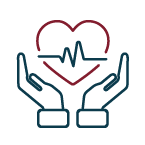
Medical emergencies can happen at anytime.
Campus Safety Services (CSS) responds to all medical emergencies on campus. Their role is to assess the emergency, render care if needed and determine what response is appropriate. CSS staff is trained in first aid and CPR/AED use. SCU EMS, comprised of student Emergency Medical Technicians (EMT) may also respond to render care.
If the patient is experiencing any of the following symptoms CALL or TEXT 911 IMMEDIATELY:
- Unconscious, or may have experienced momentary unconsciousness
- Head injury
- Bleeding profusely
- Chest pain
- Shortness of breath
- Choking*
When reporting medical emergencies be prepared to provide the patient’s location, illness/injury, and name, as well as your own name and callback number.
You should be prepared to brief the responding personnel about what you know about the patient, particularly their age. Also of interest to responding personnel is a patients pre-existing medical conditions, current medications, known allergies, what they’ve eaten that day, and if/how much drugs/alcohol they’ve consumed.
For cardiac-related emergencies, There a number of Automated External Defibrillators (AEDs) placed throughout campus. Proper AED use is part of the AHA Out-of-hospital Chain of Survival that can improve chances of survival and recovery for victims of cardiac arrest.
- Santa Clara County L.I.F.E. File: Lifesaving Information For Emergencies
- Set up your Medical ID in the Health app on your iPhone
*The University has one publicly accessible LifeVac rescue suction device that is co-located inside the Benson Memorial Center AED cabinet. From the manufacturer: "LifeVac is to be used after BLS protocol (AHA/ARC) has failed, or cannot be administered (wheelchair, medical conditions etc)."
The LifeVac device intended as a "last resort" medical device to clear foreign body airway obstructions in adults and children when back blows and abdominal thrusts (Heimlich) fail to dislodge the obstruction.
Learn how to use a LifeVac by following this LINK to a training video.